
Startups: How To Build A Content Strategy From Scratch
Your website is set up and your blog is ready to be populated with new posts.
However, before you rush into developing content to publish to your site, you should take some time to create a plan for your team (or, if you are the only one working on content right now, your future team).
Without a clearly defined strategy, your content probably won't give you the results you're looking for. If you are the navigator, make sure to bring a map and a compass.
Follow these steps to build your content strategy from scratch.
Set Goals

When you develop budgets for your enterprise there are usually goals handed down from the executive team. These goals keep the team focused on moving forward and growing.
What are you hoping to achieve with your content strategy?
Are you looking to increase traffic to your website? Are you hoping to solve customer pain points? Do you want to grow your email list?
Your goals should be linked to metrics that can be tracked (see next point). If you can't measure how you're doing, your goals simply aren't specific enough.
Don’t set unrealistic goals either. For example, if your current visitor count on any given month is about 1,000, don't set a goal to grow that number to 10,000 by next month, unless you have a particularly good reason to believe that it will happen. Be as realistic as possible.
A balanced goal is one that stretches you a little, but still appears attainable.
Track Relevant Metrics
If you are hoping to generate more leads with your content strategy, start tracking how many leads your content is producing (i.e. phone calls or opt-in form signups).
If you are looking to build more search traffic to your site, start tracking how many visitors are finding your site on popular search engines like Google, Yahoo and Bing.

Regardless of what your goals are, you can track specific metrics using a tool like Google Analytics. While it is great to be able to access and view a variety of different stats, it's better to have a clearly defined focus for your strategy so that you can key in on numbers that matter to you and your business.
Research Keywords
Your target keywords are going to change the way you approach your content strategy.
If you are in a highly competitive industry or niche (like social media or SEO), you're going to have to commit to the long-term development of high-quality, high-value content. You may have to write authoritative, in-depth articles that span anywhere from 1,000 to 3,000 words depending on the subject matter.
Conversely, less crowded markets may not require you to invest as much time or effort into writing detailed content. Simple 300 to 500 word posts might get your content ranked highly in search results.
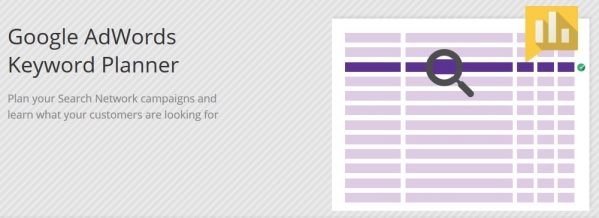
Use a tool like Google AdWords Keyword Planner to research your topics. Take some time to find out what people are actually searching for. Look for keywords that you can rank for immediately.
Understand Your Audience
When it comes to understanding your audience, there are very few shortcuts. If you are building your content strategy from scratch, you probably don't know who your audience is just yet.
At this stage, developing a target customer profile would prove worthwhile. The question that you need to be asking yourself is, "who is my ideal customer?".
More than likely, there is going to be more than one type of person that fits this description. Try to envision a few different profiles, and create brief descriptions for each.
Then, identify goals for each type of customer. They probably have different pain points to solve, so think about how your product or service can provide possible solutions.
Additionally, carefully consider these points:
- Language: how would your customer describe their problems? Learn how to explain your offering in a way that your potential customer can relate to.
- Objections: are there specific reasons why someone who is interested in your offering might hesitate in working with you? Find out why, and try to address those issues.
- Engagement: how can your content solve your audience's pain points? How would they prefer to consume the content you create?
While there isn't a set-in-stone formula for content creation, some of your customers may prefer to listen to podcast audio, while others may want to read blog posts or watch videos. Still others might like to have checklists that they can follow along with. Do you know what your target customer needs?
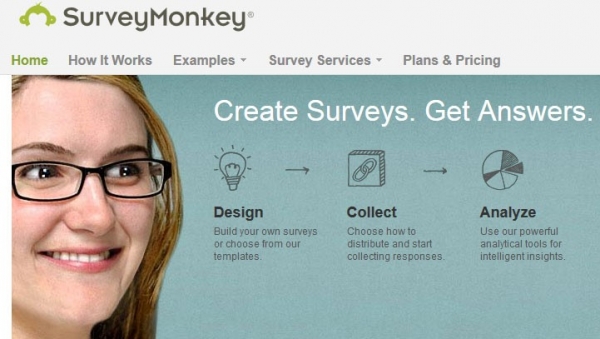
Once you have built your following to a healthy size, you can also ask targeted questions using a tool like SurveyMonkey. This is a powerful way to collect data and feedback that will enable you to improve your strategy.
Create An Editorial Calendar
Every marketing strategy needs a plan, and when it comes to content creation, your editorial calendar is your plan. This is where you store post ideas, pertinent notes, publish dates, keywords, blog post specifications (i.e. word count), and other relevant information that keeps the publishing of new content on your site regular and consistent.

You can simply create a spreadsheet in Google Drive and share it with team members. That way, you can collaborate on content ideas with other writers and pool your expertise and knowledge in one place.
If you are reporting to a manager, your editorial calendar will also serve as a log of work that you have completed. You can submit it for their review as you check off items on your list.
Continue to update your calendar well in advance of posts being published to your site so that you can plan ahead; especially if you are planning on collaborating with other industry experts or bloggers.
Create Targeted Content
This point fits hand-in-glove with understanding your audience. However, creating targeted content isn't just about producing the right kind of content. It's also about understanding where your audience is in your sales cycle.
For example, let's say that a certain visitor found your website through a Google search. At this point, they may be interested in what you have to offer, but because they are just starting to research the subject, they probably aren't looking for advanced guides and tutorials. They are more likely to be looking for broader, explanatory content that answers some of their immediate questions.
In general, you can create content for three different types of visitors to draw them in:
- New visitors: people that want to learn about the topic but have very little or no prior knowledge. Answering questions with your content is a powerful way to draw these users in.
- Intermediate visitors: people that already understand the basics, but have the desire to go deeper into the topic. How-to guides, checklists, resource and tool recommendations are all effective ways to reach these people.
- Experienced visitors: people that already know the subject matter very well, but are dissatisfied with other products they've tried. You may want to give them a compelling reason for giving your solution a try.
These categories are fairly general, but you can use them as a starting point to help you create content for people with varying interest and experience levels.
Building A Content Strategy
Next is creating a content strategy around the questions your target audience is asking.
You probably answer common customer questions all the time without even thinking about it. Your answers to questions that happen in person, on the phone or even with your customer service can all make for great website content.
Questions relating to your business (How much does it cost?; What do we get?) are made for the selling pages on your site like the home page, services page and FAQ pages.
But other questions relating to the industry are perfect for other types of content including blog posts. By answering these questions you’ll position the posts to rank well in search engines and when shared on social media.
You can start with the questions you’re asked in person. Take down the questions your customers ask you this week such as, “What are your thoughts on this industry trend?”
But you can also find great questions online.
Forums are good places to search for the questions your customers are asking. Quora is a top forum with all kinds of questions on a variety of topics. You can search for a general topic relating to your industry:
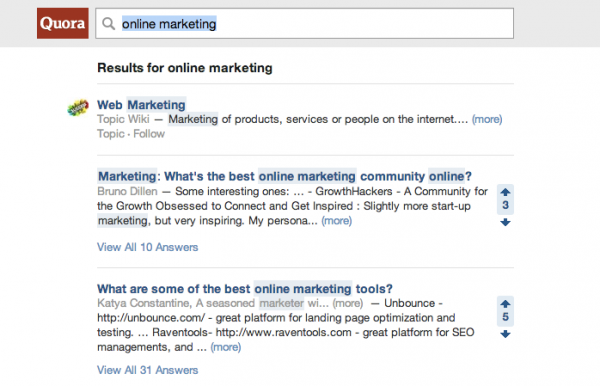
And you can search for more specific phrases relating to your industry and your business:
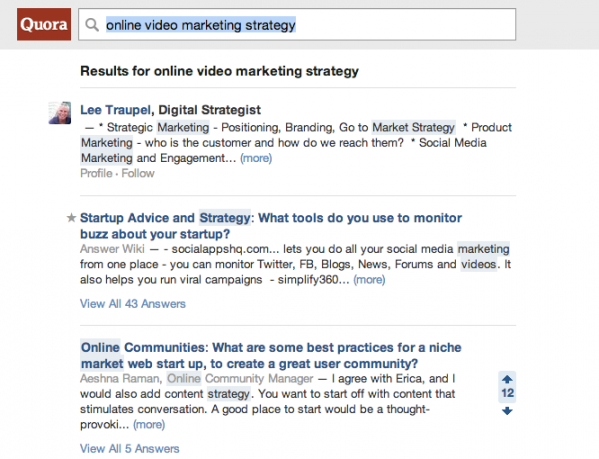
You can let Quora suggest potential searches if you can’t think of something. Simply start typing in a basic item and let the suggested phrases appear in the search bar (don’t hit the Return button):
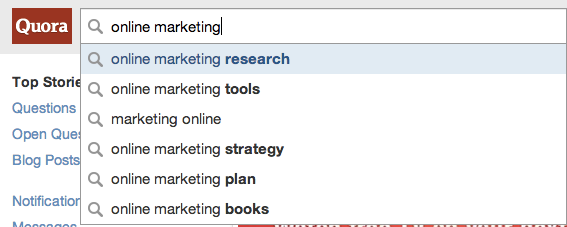
Other online forums and places to find questions include:
You can find unique forums for your industry as well by doing a Google search for “your industry forum”:
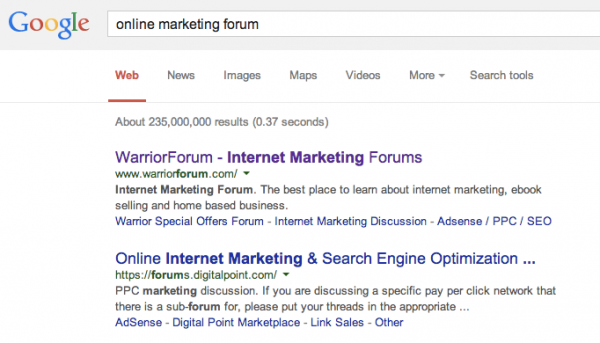
By answering questions you’ll position yourself as a thought leader in the industry. You’ll become an essential source for answers and information. By educating your customers you’ll become an authority and that can lead to more incoming links from websites, blogs and social media.
Market Your Content
You may have heard that anything you put online stays there indefinitely. While that may be true, if search is your only source of traffic, you may find it difficult to build awareness for your business. You have to promote and distribute the content that you've put so much time and effort into.
Here are a couple of different ways in which you can get your content noticed:
- Share it on social media: even if your online communities aren't that big yet, it's still a good idea to share your content on sites like Twitter, Facebook and Google+, as it will get indexed faster. Make sure to give your visitors a way to share the content on your site too.
- Re-purpose it: is there a way for you to turn your post(s) into a press release? An email campaign? A PowerPoint? A podcast or audio file? A video? This will help you to get the attention of the media and streamline content development for platforms like SlideShare, iTunes and YouTube.
You can also conduct interviews with industry experts, submit your content to review sites, engage with the media to provide them with compelling stories, and build partnerships with other bloggers and content creators. Depending on the industry you represent, it may be worth exploring these avenues.
For much more (over 30,000 words) on marketing content look at the information in The Complete Guide To Building Your Blog Audience.
You’ll find more details on the items above and even more on the importance of building an audience and marketing your content.
Conclusion
Always remember that content strategies are developed over the long haul.
You may see some traction early on, but the greatest rewards and benefits come with time. Make sure to stick to your plan and keep producing high quality content that adds value to your visitors.

Aaron Agius is an experienced search, content and social marketer.
He has worked with some of the world's largest and most recognized
brands to build their online presence.
See more from Aaron at Louder Online, their Blog,
Facebook, Twitter, Google+ and LinkedIn.
Previously in the content marketing series:
Sisältömarkkinointi osa 1: Natiivimainonta
Sisältömarkkinointi osa 2: Ars gratia artis, sanoo sisältömarkkinointi
Sisältömarkkinointi osa 3: Olipa kerran tarina, joka oli tärkeämpi kuin sisältö
11.11.2024
Verkkomainonnan osuus jo yli 60 %
Verkkomainonnan määrä vuoden 2024 kolmannella kvartaalilla oli noin 180 miljoonaa euroa. Vuoden 2023 vastaavaan kvartaaliin verrattuna digimainonnan määrä kasvoi noin viisi prosenttia. Verkkomainonnan osuus kaikesta mediamainonnasta Q3/2024 aikana oli peräti 62 %.
lue lisää18.06.2024
Digimainonnan määrä Euroopassa +11% kasvussa 2023
IAB Europe julkaisi 12.6.2024 AdEx-yhteenvetoraportin digitaalisen mediamainonnan määrästä Euroopassa vuonna 2023. 63 % kaikesta Euroopan mediamainonnasta oli digitaalista ja digimainonnan määrä kasvoi 11,1 % vuoteen 2022 verrattuna. Digimainonnan kokonaisvolyymi Euroopassa oli vuonna 2023 lähes 97 miljardia euroa. AdEx-tutkimuksen tiedonkeruu tehtiin 29 Euroopan maassa.
lue lisää10.06.2024
Digitaalinen audiomainonta vahvalla kasvu-uralla - kokonaismarkkina jo 9,3 miljoonaa euroa
IAB Finlandin digitaalisen audiomainonnan työryhmän toteuttaman estimaatin mukaan digiaudiomainonnan määrä vuonna 2023 oli 9,3 miljoonaa euroa, joka tarkoittaa yli 30 % kasvua vuoteen 2022 verrattuna. Vuonna 2022 markkina-arvio oli 7,1 miljoonaa euroa. Digitaalinen audiomainonta, mukaan lukien podcastit ja muut digitaalisen audion alustat, on nousemassa yhä keskeisempään rooliin mainosmaailmaa. Suomessa kasvun myötä toimijoiden odotetaan investoivan yhä enemmän sektoriin tulevina vuosina.
lue lisää23.05.2024
Verkkomainonta vuoden 2023 tasolla
Verkkomainonnan määrä vuoden 2024 ensimmäisellä kvartaalilla oli noin 164 miljoonaa euroa. Vuoden 2023 vastaavaan kvartaaliin verrattuna digimainonnan määrä laski muutaman prosentin kymmenesosan. Verkkomainonnan osuus kaikesta mediamainonnasta jatkaa kasvua, ollen Q1/2024 aikana 57 %.
lue lisää

